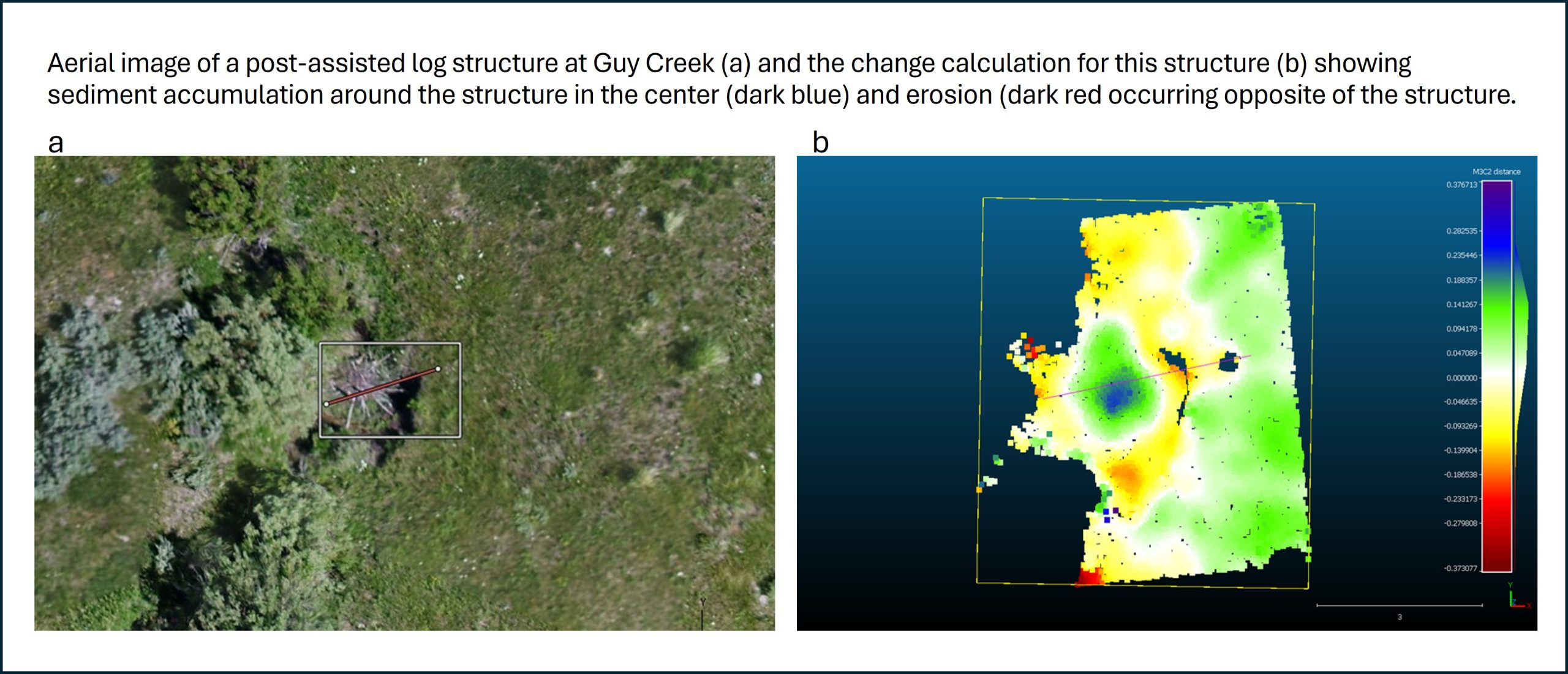Effects of Low-Tech Process-Based Restoration on Rangeland Riparian Areas
Monitoring stream and riparian restoration projects through repeated drone-based images can be an effective way to evaluate if the project is progressing towards restoration objectives. In a pair of research and conservation projects in central Idaho, we evaluated stream-channel change initiated by the installation of low-tech woody structures intended to re-engage hydrologic and geomorphic processes. Repeated drone-based imagery can be used with structure-from-motion photogrammetry to create a 3-D point cloud of the stream channel. Co-registered points clouds can then be analyzed to determine the change in channel profile and geometry. One year after the installation of post-assisted log structures, the stream channels showed that these wooden structures created areas of sediment deposition and aggradation, mimicking the development of point bars. Erosion opposite the structures showed that the stream flow is being deflected away from the structure and towards the outside meander bend of the channel. Our analysis showed that we could pick out changes that were greater than 16cm at the 95% confidence level after just one year.

